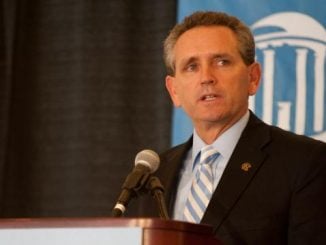
The NCAA released the latest figures for college athlete graduation rates, and for schools in North Carolina, the news was positive.
Duke led the way, both in the state and nationally. The Blue Devils athletic program had a Graduation Success Rate (GSR) of 98 percent, which tied Notre Dame and Northwestern as best among all Football Bowl Subdivision teams in the country.
Duke was one of several men’s basketball programs — including in-state teams Davidson and Elon — with a perfect 100 percent GSR. The Blue Devils’ 96 percent GSR in football was second to Northwestern among Bowl Subdivision schools. Charlotte, which had a perfect 100 percent football GSR, wasn’t yet a member of the Bowl Subdivision for the time period the current numbers cover.
What do the numbers mean?
GSR is a measure of how many incoming freshmen graduate within six years. Unlike the Federal Graduation Rate (FGR), it moves any athletes that transfer to the school that they end up. So Seth Curry, for instance, who entered Liberty in 2008 and left Duke in 2013 with a degree, would be counted as a dropout at Liberty and ignored by Duke in the FGR numbers. In GSR, he is ignored in Liberty’s numbers and counted as a Duke graduate.
GSR also excludes any athletes who leave school for a professional career, as long as they are in good academic standing when they leave. Those athletes would be included in the FGR numbers. That means that Kyrie Irving, Harrison Barnes and John Henson, all of whom are still playing the NBA, would hurt their school’s FGR percentage but not the GSR.
The time period covered in this year’s numbers include all scholarship athletes that entered school from the 2008-09 year to 2011-12.
Only athletes who come to a school on athletic aid are included in the numbers. So walk-ons, even if they eventually earn a scholarship, are excluded. While they aren’t included in the current graduation rate reports, since they arrived in college after the dates in question, it means that players like former UNC receiver Mack Hollins, UNC senior basketball forward Luke Maye and Duke quarterback Daniel Jones won’t impact their school’s GSR or FGR rates.
The national average GSR for Division I athletes is 88 percent. The average for men’s basketball is 85 percent and 79 percent for football.
How did we do?
Seven schools in the state exceeded the GSR national average for student-athletes: Duke, Davidson, UNC Asheville, Elon, Wake Forest, Charlotte and High Point. Eleven were below the average, with App State (81), NC Central (80) and NC A&T (68) at the bottom.
NC State (86) and UNC (83) ranked 13th and 14th in the 15-team ACC, ahead of only Florida State.
In men’s basketball, eight teams exceeded the average: Davidson, Duke, Elon, NC Central, High Point, Gardner-Webb, UNC Asheville and Charlotte. Eight were below, with UNC (64), ECU (62) and NC State (56) at the bottom. UNC and State were at the bottom of the ACC, with Virginia Tech (70) the next lowest.
Six football teams — Charlotte, Duke, Elon, Davidson, Wake Forest, Campbell — were better than the national average. Seven were below, with Gardner-Webb (66), UNC (62) and NC A&T (51) at the bottom. UNC was last in the ACC. NC State (74) was 12th out of 14 teams.
Getting better
For many of the schools in the state, particularly those outside the major conferences, this year’s numbers represented the latest in steady, significant improvement on the academic front. UNC Asheville’s overall 95 GSR and 73 FGR are 30- and 26-point improvements, respectively, over their numbers from 10 years ago.
Gardner-Webb’s 83 GSR is a 21-point jump from 2008. It’s FGR is up 14, to 63. NC A&T (from 52 GSR to 68), NC Central (69 to 80), UNC Greensboro (73 to 84) and Charlotte (79 to 90) all saw double-digit jumps in GSR. Charlotte also added 15 points to its FGR. Campbell had an 11-point jump in FGR (51 to 62). Elon increased both its GSR (86 to 95) and FGR (73 to 81) from 10 years ago by just under 10 points.
Small-conference schools weren’t the only big gainers. The Wolfpack boosted its overall GSR from 71 to 86 and its FGR from 54 to 64.
No school saw more than a three-point drop in GSR from 10 years ago. Only Western Carolina (64 to 59) and UNC (73 to 68) saw its FGR fall by five points.




